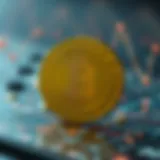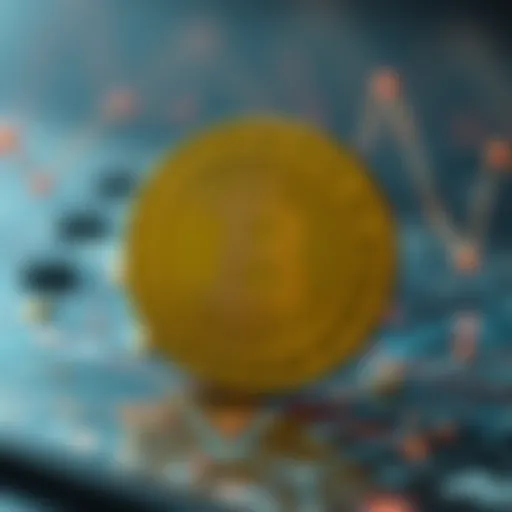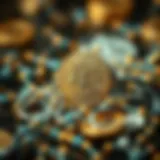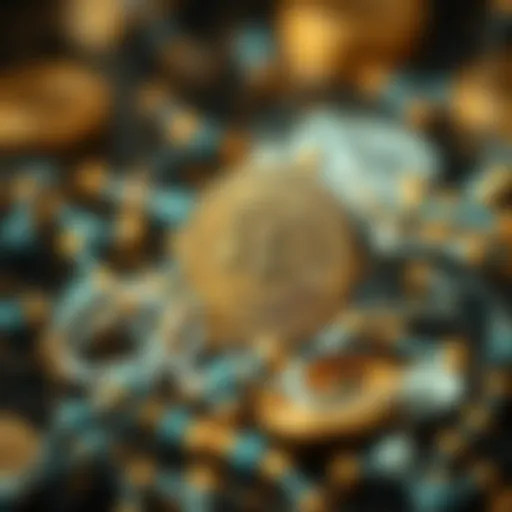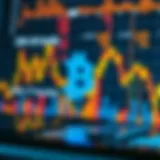Understanding Digital Art Ownership in Today's Market


Intro
Digital art ownership is not just an evolving concept; it is reshaping the entire landscape of how we perceive value, authenticity, and creativity. As artists explore new mediums and collectors eye unique investments, the intersection of technology and art has never been more vibrant and complex. The emergence of non-fungible tokens (NFTs) and the robust implementation of blockchain technology have sparked discussions that were, until recently, the domain of niche communities. This article aims to dissect these developments, offering insights for investors, analysts, developers, educators, and enthusiasts who wish to navigate these choppy waters.
Crypto Concepts Explained
Understanding the foundational elements of digital art ownership involves unpacking specific crypto concepts that are pivotal in this discourse.
Key Terminology and Definitions
First things first. To effectively engage with the digital art marketplace, one must be conversant with a few terms that often get thrown around.
- Crypto Art: Artwork that exists within the digital realm and is secured through blockchain technology.
- Blockchain: A decentralized digital ledger that records transactions across many computers securely.
- NFT (Non-Fungible Token): A unique digital asset that represents ownership of a specific item or piece of content on the blockchain. Unlike cryptocurrencies such as Bitcoin or Ethereum, NFTs cannot be exchanged on a one-for-one basis.
Understanding these terms is crucial, as they lay the groundwork for more in-depth discussions on art, ownership, and investment.
Practical Applications of Blockchain Technology
Blockchain technology provides various practical applications that enhance digital art ownership. Here’s how:
- Provenance Tracking: Whether we’re talking about historical artifacts or modern digital pieces, knowing the origin and ownership history is vital. Blockchain offers indisputable records.
- Smart Contracts: These are self-executing contracts with terms of the agreement written into code. In the case of art, they can automatically enforce sales agreements, ensuring creators receive royalties on future sales.
- Decentralized Marketplaces: Platforms like OpenSea and Rarible have emerged where artists can sell their work directly to buyers, circumventing traditional galleries or auction houses.
A deeper understanding of these applications can illuminate the broader implications they have on ownership and artistic value.
"The beauty of blockchain is in its transparency; it allows a much-needed trust in a world that often struggles to define ownership and authenticity."
Investment Strategies
As the digital art market evolves, so too do the strategies that investors may employ to tap into this burgeoning field. Understanding the nuances here is crucial for sustainability and profitability.
Analyzing Market Trends and Indicators
Navigating the investment landscape means keeping an eye on certain trends:
- Price Movements: Monitor sales records and pricing histories for specific artists and styles.
- Community Engagement: Active participation in forums like Reddit or Discord channels where artists and buyers interact can provide insights.
- Social Media Buzz: Following notable influencers and critics within the crypto art space can unearth valuable predictions and opinions.
Risk Management Techniques
Every investment carries risk, especially in a field as volatile as digital art. Here are some methods to mitigate that risk:
- Diversification: Just like one wouldn’t put all eggs in one basket, extend your investments across various artists and styles.
- Research: Staying informed about emerging artists and their platforms can shine a light on potential future value.
- Engaging in Smaller Investments: It can be wise to dip your toes with smaller purchases before committing substantial funds to more high-profile pieces.
Navigating the world of digital art ownership is not as straightforward as one might believe, but with the right grasp of crypto concepts and investment strategies, it becomes distinctly feasible.
Intro to Digital Art Ownership
The advent of digital art ownership has profoundly reshaped not just the artistic landscape but also the framework for recognizing value in creative endeavors. This section lays the groundwork for understanding the significance of digital art ownership within the broader context of the modern art world. As investors, artists, and collectors delve into this arena, they must grasp the nuances that define the digital medium.
Defining Digital Art
Digital art encapsulates a variety of artistic expressions that harness digital technology either as a primary tool or as a transformative medium for creation. This includes illustrations, animations, 3D models, generative art, and more. With computer software at the heart of the creative process, the art can be easily duplicated and disseminated—changing how we view originality and access. For instance, a digital painting can exist in a myriad of formats, potentially altering its perception as a one-of-a-kind masterpiece. The term "digital art" itself might mean different things to different people, but at its core, it allows artists more freedom to explore and experiment without the limitations often seen in traditional forms.
Historical Context of Art Ownership
The trajectory of art ownership has a long and pertinent history, shaping how we conceive of art as a commodity. Historically, art was primarily owned by royalty and elites, confined to the walls of palaces and galleries. The Gutenberg printing press in the 15th century changed this to some extent, democratizing access to art through printed reproductions. Fast forward to the 20th century, movements like Dadaism introduced an avant-garde approach that questioned conventional ownership and authenticity.
With the rise of the internet, the accessibility of art was further transformed. Digital ownership emerged as a concept challenging traditional practices. Artists began to embrace the idea of sharing their work online, often offering it for free or under experimental licenses. This shift brought about significant changes, particularly concerning copyright and intellectual property laws. As digital art continues to evolve, understanding these historical shifts is crucial for appreciating current trends in art ownership and the burgeoning market for NFTs.
"Art is not freedom from discipline, but disciplined freedom." – André Gide
In summary, the journey of art ownership from exclusivity to a more democratized form serves as a backdrop to today's digital landscape. Emphasizing the importance of these historical changes lays the framework for understanding how digital art ownership not only influences artists and collectors, but also impacts the economy of art itself.
The Rise of Digital Art in the Modern Age
The digital art scene is flourishing like a wildflower in spring, driven by technological advancements and changing perceptions of art ownership. In this contemporary age, where pixels can symbolize creativity just as much as paint on a canvas, digital art holds a significant space in the art market. The emergence of innovative tools, alongside a societal shift towards the digital world, is reshaping how we view, purchase, and own art. As artists explore new mediums, the conversation about ownership, authenticity, and value has intensified, making it a pertinent stage in the art community.
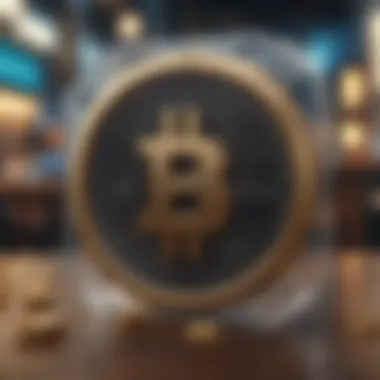

Evolution of Artistic Mediums
Artistic expressions have been going through a fascinating evolution. Initially, art was confined to traditional mediums like oil paints and clay, but with the rise of computers and software, a new era emerged. The advent of digital painting tools like Adobe Photoshop and Procreate made the canvas much larger — essentially, any screen can be a canvas now. Here's a closer look at how these changes have influenced the artistic landscape:
- Accessible Tools: With a plethora of software options and hardware improvements, artists are no longer limited to traditional materials. Tablets and styluses have become common tools, lowering barriers for creation.
- Diverse Styles: Digital platforms allow for a wider range of styles and techniques that were often not feasible with traditional mediums. Artists can experiment with animation and interactive art like never before.
- Democratization of Art: Online tutorials, communities, and forums have made it easier for anyone to learn art techniques, allowing budding artists to thrive, regardless of their background.
Yet, this evolution comes with its challenges. As the mediums change, so do expectations when it comes to what art should be. Critics often debate on the “value” of a digital artwork compared to one created by hand, questioning originality when countless reproductions circulate online. Despite this, the creativity that flourishes in the digital realm adds layers of complexity and relevance to the ongoing discussion about art ownership.
Expansion of the Art Market Online
The internet has become a bustling market for digital artists and collectors alike. Once constrained by physical galleries, art has found a new home on virtual platforms, transforming how we buy and sell. The online art market is not just a trend; it’s an evolution driven by necessity and opportunity. Key aspects include:
- Global Reach: Artists can now display and sell their art to a worldwide audience, flipping the script of who can access art. This creates a diverse marketplace where various styles and cultures intermingle.
- Emergence of NFT Platforms: The rise of non-fungible tokens signifies a significant shift. Platforms like OpenSea and Rarible allow artists to directly monetize their digital creations, assuring buyers of authenticity and ownership.
- Community Engagement: Social media plays a vital role, forming tight-knit communities of artists and collectors. Hashtags, groups, and forums facilitate sharing work and experiences, further cultivating a rich network for insights and connections.
Through these online platforms, not only has the marketplace expanded, but also the narratives surrounding the art have shifted. Collectors now have different motivations — it’s not just about aesthetic appeal anymore; it's about supporting artists and taking part in the evolving culture of digital creativity.
"The digital revolution has not only changed how we create art, but it has also transformed ownership and appreciation in ways we are just beginning to understand."
In summary, the rise of digital art in the modern age emphasizes a critical junction in the art world — an intersection of technology, globalization, and a new wave of artistic expression. As we navigate through this digital landscape, the implications of these changes will continue shaping our understanding of what it means to own and appreciate art in this modern era.
Understanding Non-Fungible Tokens
In the realm of digital art, non-fungible tokens, or NFTs, have emerged as a groundbreaking innovation reshaping ownership and value perception. The importance of understanding NFTs lies not just in their technological underpinnings but also in how they serve as a bridge between the digital realm and traditional art ownership principles. As digital art continues to gain traction, NFTs provide a tangible mechanism that authenticates ownership and establishes provenance, which is crucial in an era where replication is just a click away.
Defining NFTs
At their core, NFTs are unique digital markers created using blockchain technology. Each NFT is distinct and cannot be replaced, unlike cryptocurrencies such as Bitcoin or Ethereum, which are interchangeable. This uniqueness affords NFTs their non-fungible characteristic. They provide a way to represent ownership of digital assets—anything from digital images, music, and videos to virtual real estate.
Unlike traditional art, where ownership is often tied to a physical piece, NFTs encapsulate the entire essence of a digital creation within a single token. This enables artists to track how their works are bought and sold, which introduces a level of transparency that was virtually unheard of before.
How NFTs Transform Ownership
NFTs have revolutionized the concept of ownership in multiple ways:
- Provenance and Authenticity: Each NFT contains metadata that ties it to its creator, ensuring that ownership can be verified. This eliminates counterfeiting, making it clear who the rightful owner is at any moment.
- Resale and Royalties: One of the most significant benefits for artists is the inclusion of smart contracts within NFTs. These contracts can stipulate that artists receive a percentage of future resale prices, fostering a more equitable model in the art market.
- Democratization of Art Access: NFTs allow artists to reach global audiences without traditional gatekeepers, hence democratizing access to art. This expansion opens doors for both emerging artists and passionate collectors.
- Community and Ownership: To some extent, ownership is redefined. Buyers of NFTs often feel a connection to the artist and the community surrounding them, leading to a shared experience beyond mere possession.
"Ownership becomes more than just having a piece of art; it's about being part of a wider narrative and engagement with the creator and their audience."
The Role of Smart Contracts
Smart contracts play an integral part in the world of NFTs. These self-executing contracts reside on the blockchain, allowing the terms of the agreement to be forcibly executed without intermediary involvement.
- They govern the transaction processes for NFTs, ensuring that specific conditions are met before the token is transferred. For instance, an artist might ensure that they receive 10% royalties automatically every time their artwork is sold to another buyer.
- Smart contracts function as a way to enforce ownership rights and enable automated transactions, minimizing disputes and making processes incredibly efficient.
Marketplaces and Platforms for Digital Art
The significance of marketplaces and platforms for digital art cannot be overstated. As the digital realm continues to burgeon, providing venues where artists can showcase and sell their works becomes paramount. These platforms are the backbone of the digital art economy, giving artists a place to present their creations while granting collectors a curated environment to discover and purchase unique pieces.
In the heart of this landscape lies the concept of accessibility. With the rise of blockchain technology and NFTs, the barriers once hindering artists from gaining visibility and collectors from accessing digital assets are starting to crumble. Instead of physical galleries and traditional auctions, we find ourselves browsing digital galleries filled with vibrant artworks that can be acquired with just a few clicks. Even the geographically remote can find a home here; the internet connects artists with enthusiasts worldwide, allowing for an appreciation of diversity in style and medium.
While opportunities abound, navigating these platforms requires a discerning eye. Not every marketplace is created equal, and both artists and collectors must weigh factors like transaction fees, user experience, and community engagement. A platform with a vibrant community may provide better sales opportunities for an artist, while collectors might prefer marketplaces that offer strong verification processes to ensure authenticity. Ultimately, the landscape of digital platforms reflects the evolving nature of art itself, presenting a unique set of challenges and opportunities.
Leading NFT Marketplaces
Among the bevy of NFT marketplaces, names like OpenSea, Rarible, and Foundation dominate the conversation. OpenSea, often regarded as one of the largest NFT marketplaces, hosts a myriad of digital assets including artworks, domain names, and even virtual real estate. This platform not only allows creators to showcase their secondary sales but also enables creators to set their royalties.
"An artist’s income can thus grow as their works gain popularity through resale."
Rarible stands out for its community governance model, where users can influence platform decisions through its native token. This idea of community-driven decisions caters to a new generation of digital artists looking for more than just a transactional relationship. Then we have Foundation, which has positioned itself as a platform for the more curated and exclusive side of digital art. Artists typically need to be invited to participate, adding an element of prestige to the works featured.
Emerging Platforms
As the digital art marketplace continues to expand, several new platforms are carving out their niche. One such platform is Hic et Nunc, known for its decentralized approach to art curation and sales. It allows artists to mint tokens directly on the Tezos blockchain, leaning into a more eco-friendly option amid environmental concerns related to blockchain energy consumption.
Another noteworthy platform is Mintbase, which focuses on allowing artists and creators to create and sell their NFTs without needing extensive technical knowledge. This lowers the barrier to entry for many and can potentially diversify the types of artworks available in the digital space.
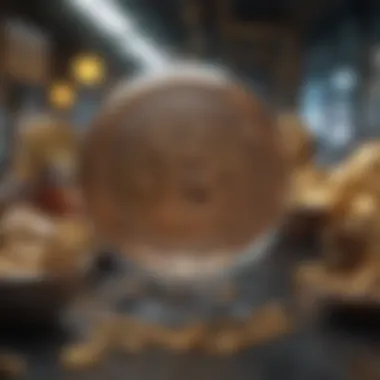

Both emerging and established marketplaces are essential to understanding digital art ownership. As this sector evolves, keeping a pulse on the newest platforms may uncover untapped potential for both artists and collectors.
In the grand tapestry of digital art, marketplaces and platforms serve as the loom that sustains its creation and distribution, shaping how we view value and ownership in this new age of art.
Challenges in Digital Art Ownership
In exploring the landscape of digital art ownership, it is crucial to shine a spotlight on the challenges that present a complex tapestry for artists, collectors, and the broader market. Digital art ownership is fraught with nuances that set it apart from traditional mediums. This section addresses the importance of understanding these challenges not just for academic purposes, but for practical navigation through this evolving domain.
Authenticity vs. Replication
The issue of authenticity in digital art is thorny. Unlike physical art, which holds a certain essence perceived through unique brushstrokes, digital art can be copied with the mere click of a button. The original piece, once held by an artist, can spawn a thousand indistinguishable twins. This brings us to a significant question: how do we define and protect the original?
Here, non-fungible tokens (NFTs) play a critical role. They are designed to provide a digital certificate of authenticity. Yet, the existence of replicas, even as high-quality as the original, can dilute the perceived value. For collectors, distinguishing between an original and an excellent copy may require more than just technology; it demands a nuanced understanding of value, which is often subjective.
To navigate these waters, artists and buyers need to engage with various platforms that uphold integrity and traceability. It's not just about possessing digital art but understanding what it truly represents.
"Art is not what you see, but what you make others see." — Edgar Degas
Legal Implications of Ownership
Alongside questions of authenticity, the legal dimensions of digital art ownership are layered with complexities. Unlike traditional copyright, which offers clear protections, the digital sphere is still figuring out the rules of engagement. Various laws, like the Copyright Act, apply, but the interpretation in the context of digital assets remains uncharted territory for many.
Collectively, artists often find their rights compromised as their work can be misused or misappropriated without consent. Ownership may not just involve possession but includes deciding how an artwork can be displayed or altered. Contracts surrounding digital art transactions need to be meticulously crafted to safeguard the rights of artists while it also serves collectors and resellers.
In this web of legalities, the best course may often involve consultation with legal experts familiar with digital assets. Klutzing through regulatory challenges is more than just a headache; it could determine the future viability of an artist's career or a collector’s investment.
A few considerations include:
- Intellectual Property Rights: Understanding how they apply to digital creations.
- Transferability: How ownership can be legally transferred or inherited.
- Licensing Issues: What rights are granted with purchases (e.g., reproduction rights).
As the digital art world evolves, so too will the legal frameworks that underpin it. Vigilance and adaptability will emerge as critical tools for all stakeholders involved in the ownership of digital art.
Ethical Considerations in Digital Art
In the whirlwind of digital art ownership, ethical considerations loom large. As technology reshapes how art is created and consumed, the morality surrounding artists' rights and the integrity of cultural representation becomes increasingly vital. This article strives to shed light on some of the most pressing ethical issues, exploring how these elements not only affect artists and collectors but also the wider community that engages with digital art.
Artist Rights and Compensation
When we talk about digital art, it’s essential to keep the artists in focus. They are the heartbeat of this vibrant world. Digital artists often face challenges that their traditional counterparts may not, including concerns about ownership and compensation. Unlike physical artworks, digital pieces can easily be duplicated and distributed, leading to potential erosion of the original artist's revenue.
Consequently, how do we ensure that artists are fairly compensated for their work? In many cases, artists may find themselves in a position where they sell their pieces for a one-time fee, only to see their work proliferate without any further benefit to themselves. This raises serious questions about sustainability in digital art.
To mitigate these issues, some digital artists are turning to Non-Fungible Tokens (NFTs), which embed ownership information on the blockchain. This innovation allows for a clearer tracking of transactions and ensures that artists potentially receive royalties each time their artwork is resold. Furthermore, artists now can enforce license agreements digitally, carving out the kind of control over their creative works that is often taken for granted in the physical art world.
Despite these advancements, however, the complexities of compensation remain significant. Artists might receive enticing offers from platforms to list their works, often without sufficient understanding of how royalties are structured or the markets they will enter. Moreover, the temptation to undervalue their work in a competitive digital landscape can be overwhelming. As the community navigates these waters, developing best practices surrounding fair compensation is crucial for maintaining a thriving artistic culture.
Cultural Appropriation and Sensitivity
The term "cultural appropriation" is often tossed around, especially in discussions of artistic expression. Within the digital art landscape, sensitivity to cultural influences becomes particularly important. As creators often draw inspiration from various cultural backgrounds, failing to acknowledge their sources can lead to significant ethical dilemmas.
Cultural appropriation occurs when elements of one culture are taken and used by another, often without permission. For instance, if an artist from outside a particular cultural background adopts and reinterprets traditional symbols or motifs without understanding their significance, it can result in a dilution of meaning, breeding resentment among those whose culture has been appropriated.
Artists must engage thoughtfully with their inspirations, giving credit where it’s due and embracing the narratives that inform creative choices. This perspective not only fosters respect but also promotes authentic dialogue between cultures. Education plays a key role here; artists ought to invest time in understanding the cultures they engage with deeply.
"Art represents a reflection of society. Therefore, the dialogue surrounding its creation must include the voices of those represented in the piece."
To ensure a respectful approach in digital art creation, here are a few guiding principles:
- Do context research: Understanding the cultural significance of symbols can change the way they’re used.
- Engage with the community: Building relationships with cultural communities leads to more authentic representations.
- Being transparent: Clearly stating one’s influences allows for a more open dialogue.
Fostering empathy and understanding in digital art practice not only respects the rich tapestry of global cultures but also elevates the discourse surrounding art itself.
Perspectives from Artists and Collectors
The dialogue surrounding digital art ownership is far richer when we lend an ear to the voices of artists and collectors, the two primary stakeholders in this evolving ecosystem. Their experiences and viewpoints shed light on the nuanced landscape shaped by technological advancements, shifting market dynamics, and ethical considerations. Understanding these perspectives not only deepens our grasp of digital art ownership but also highlights the interconnected relationships within this dynamic sphere.
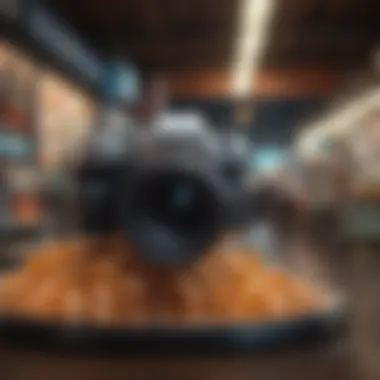

Artists’ Views on Digital Ownership
Artists today stand at a crossroads, grappling with the implications of digital ownership in their work. On one hand, the rise of non-fungible tokens (NFTs) and digital platforms presents unprecedented opportunities. Traditional barriers that once divided artists from their audience have crumbled, making it possible for creators to showcase their art directly to a global market. This direct access allows artists to retain more control over their work, ensuring they can reap a more equitable share of the profits.
Moreover, the nature of digital art allows for unique forms of creativity previously thought impossible. Artists can embed interactivity, animation, or even adaptive features in their work – pushing the boundaries of what constitutes art. However, these opportunities come hand-in-hand with challenges. Many artists express concerns regarding the long-term viability of the digital art market and seek clarity on the legal frameworks governing their creations. For instance, copyright issues remain murky, and some creators worry that their art may be appropriated without proper attribution.
In addition, there's an ongoing debate about value in the digital space. Traditional metrics for assessing worth like provenance and historical significance are harder to ascertain with digital creations. These factors compel artists to rethink their strategies for marketing and selling their work. Embracing transparency and fostering conversations around the narratives behind their art have become paramount.
Collectors' Experiences and Expectations
For collectors, engaging with digital art goes beyond stacking assets; it's about storied investments and cultural resonances. Entering this realm, enthusiasts often find themselves facing a double-edged sword. While they may be captivated by the innovative art forms and the potential for appreciation in value, they are simultaneously navigating a turbulent market defined by volatility and speculation.
Purchasing digital art isn't just about the artwork itself; it involves aligning with a community that shares similar interests. Many collectors actively seek out platform-based experiences that allow them to connect with artists, fellow collectors, and even curators. The thrill of discovering emerging talents adds a layer of excitement that traditional art forms may lack.
Expectations are varied among collectors as well. Some plot their course for investment purposes, eyeing rising stars and sought-after pieces. Others pursue a more altruistic approach, supporting artists whose works resonate personally. Understanding the motivations behind purchases helps shape the market and underlines the broader socio-cultural impact of digital art.
"As digital art evolves, collectors find themselves not just buying pieces; they are investing in stories and legacies."
Ultimately, the relationship between collectors and artists forms a complex tapestry of expectations and experiences. As the digital landscape continues to change, both parties will need to adapt, allowing collaboration and open dialogue to thrive.
The perspectives of artists and collectors are essential to the conversation on digital ownership. By melding creative vision with acquisition strategies, they set the stage for an innovative future in art. Each voice contributes to the broader narrative, creating a rich ecosystem that recognizes the value of digitization while being mindful of traditional values in art ownership.
Future of Digital Art Ownership
The concept of digital art ownership is metamorphosing at an extraordinary pace. As we stand at the crossroads of technology and creativity, the future of digital art ownership beckons with exciting prospects. This section of the article sheds light on how the landscape will likely evolve and what elements are pivotal to understand.
Digital ownership today revolves around equity and authenticity, and these elements will grow even more significant. As art collectors grapple with the ever-present questions of value and originality, the presence of blockchain technology promises to offer clarity and security. Owners will benefit from a transparent ledger, ensuring that each piece's provenance, or its historical ownership, is recorded accurately.
Furthermore, as digital art becomes more mainstream, trends in ownership are expected to shift. Traditional collectors are venturing into digital realms, while tech-savvy enthusiasts are wading in with an eye on emerging forms of artistic expression. A mitigation of barriers between novice and seasoned collectors may very well lead to a diversification of investment strategies, allowing a wider audience to explore the digital art market.
"The wild, digital landscape is stirring with untapped richness, and understanding its ownership is paramount for anyone looking to stake a claim."
Trends in Digital Art Markets
The growth of digital art markets is no fluke; recent years have seen a surge as platforms for buying and selling artwork proliferate. Some trends are particularly noteworthy as they hint at where the market might be headed.
- Rise of Fractional Ownership: Platforms allow collectors to own shares of high-value pieces. This democratizes access, enabling investors with lesser capital to partake in art markets. By sharing ownership, risk is also mitigated, a nifty tactic especially appealing in the volatile digital art space.
- Increased Authenticity Measures: As scammers thrive where vulnerabilities exist, the need for credible measures grows. Art marketplaces may soon integrate augmented reality and AI tools to verify authenticity, establishing a new standard for trust in ownership.
- Sustainability and Eco-Consciousness: With rising awareness about environmental impacts, artists may tap into digital mediums that reduce waste. Art buyers may favor works that are certified as eco-friendly.
- Social Selling: The proliferation of social media as an art sale venue can't be overlooked. Artists and collectors are leveraging platforms like Instagram and Facebook to create communities around their works, blurring the lines between creator and consumer.
The Impact of Emerging Technologies
As digital landscapes evolve, emerging technologies are set to shift the way audiences interact with, own, and value digital art.
- Artificial Intelligence (AI): AI is playing an increasing role in art creation. Artists are now using algorithms to help generate and inspire new works. This leads to unique pieces that may further change notions of authorship in digital art—does the resulting piece belong to the artist or the programmer?
- Virtual and Augmented Reality: These technologies are saturating the art world, allowing collectors to experience pieces in immersive environments. Imagine walking through a digital gallery from your living room, examining artwork up close. This enhances appreciation and could change buyers' expectations of 'viewing' versus 'owning' art.
- Blockchain Advancements: As blockchain continues to develop, so will the applications in digital art ownership. Shifts toward more user-friendly interfaces and integrations will streamline transactions. Far from just a niche market, this technology's growth indicates a future where artists and buyers alike can interact without traditional intermediaries.
The continous evolution in digital art ownership heralds a future ripe with possibility. Investors, analysts, developers, and enthusiasts must navigate this shifting terrain with awareness and adaptability to seize opportunities that lie ahead.
Epilogue: Navigating Digital Ownership
Understanding digital ownership isn't simply about grasping its nuances; it encompasses a myriad of implications for various stakeholders. With digital art firmly embedded in our contemporary society, recognizing its ownership transformation has profound relevance. The evolution from traditional ownership to digital rights brings forth a multitude of questions. These concern not only legality but also authenticity, community ethics, and the intrinsic value of creativity.
The rise of non-fungible tokens has added a layer of complexity and possibility. NFTs, as they are commonly referred to, have the potential to radically shift ownership paradigms. Artists and collectors both face a rapidly changing landscape, one that proposes new ways of creating, buying, and selling art. Moreover, these tokens contribute significantly to the ongoing dialogue about rights and compensation, sparking debates that reach far beyond technicalities.
Here are some specific elements to consider:
- Ownership Rights: Who truly owns digital art? Is it the creator, or does it lie with the buyer? This discussion is more than legalese; it's about what owning a piece of digital creativity means in the modern age.
- Technological Benefits: Platforms are emerging that are reshaping how digital works of art are conceived, marketed, and maintained. Blockchain technology plays a pivotal role here, ensuring traceability and authenticity in ownership.
- Ethical Concerns: Questions about cultural appropriation, artist rights, and fair compensation are ever-present. It’s crucial to engage with these issues to nurture a sustainable digital art ecosystem.
Summarizing Key Insights
In summary, the journey through this narrative reveals several critical insights:
- Cultural Shifts: The digital art world reflects broader societal trends towards inclusivity and accessibility. Artists can distribute their work directly, bypassing traditional gatekeepers, empowering diverse voices.
- Investment Potential: Digital artworks, particularly those validated by NFTs, are becoming financial assets. Investors must consider risks and rewards carefully, understanding that market fluctuations can be drastic.
- Future Outlook: With ongoing technological advancements, the art market is poised for further transformation. New innovations will likely shape how art is produced, sold, and collected, presenting both opportunities and challenges.
Reflecting on the Future
Looking ahead, the future of digital ownership is anything but settled. As technology progresses, we can anticipate:
- Greater Flexibility: Ownership could evolve, offering various models such as fractional ownership, allowing multiple people to stake a claim on a single piece.
- Continued Ethical Discussions: As digital art gains traction, the conversation around artist compensation and rights will intensify. Discussions surrounding intellectual property laws will need to keep pace with technological advancements to promote fairness.
- Enhanced Accessibility: Tools and platforms may emerge that democratize access to art creation and ownership, making it easier for everyday people to engage.
As we navigate this ever-shifting digital landscape, ongoing education and dialogue will be key. Engaging deeply with these topics will empower all players in the market to thrive responsibly and ethically, creating a richer tapestry of artistic expression for future generations.
"The future isn't something we enter. The future is something we create." - Leonard I. Sweet
Engagement with digital art ownership will continue to unfold, revealing layers and complexities that challenge norms and invite innovation. The importance of being proactive and informed can’t be overstated as we step into this new era.
